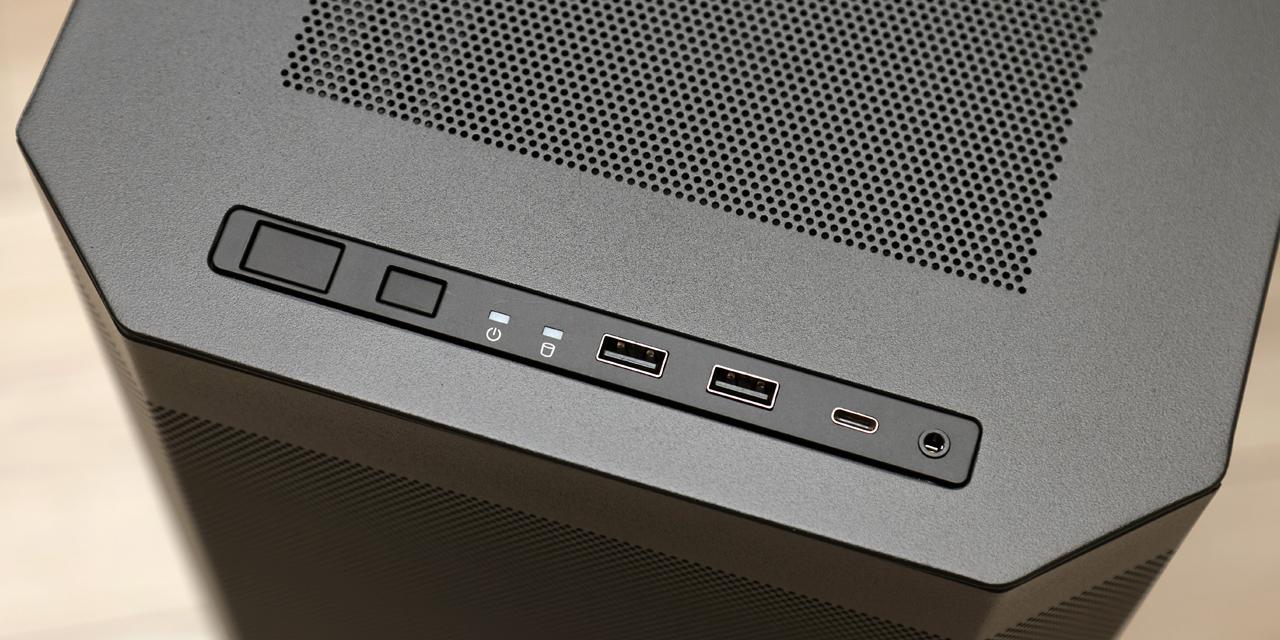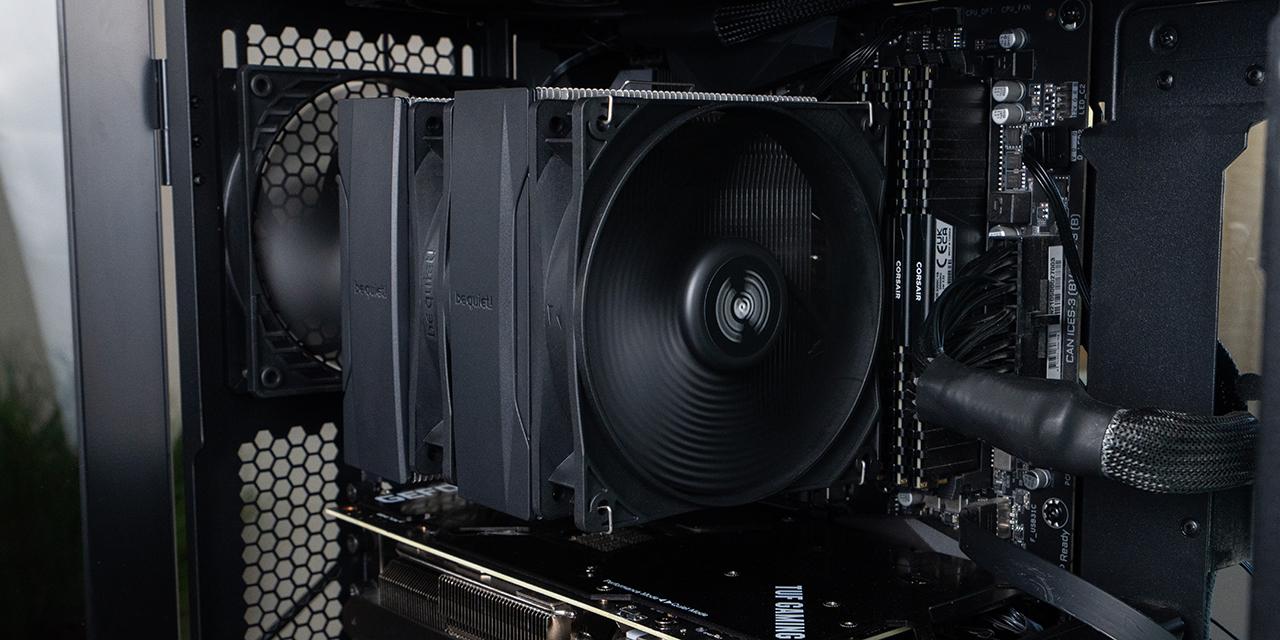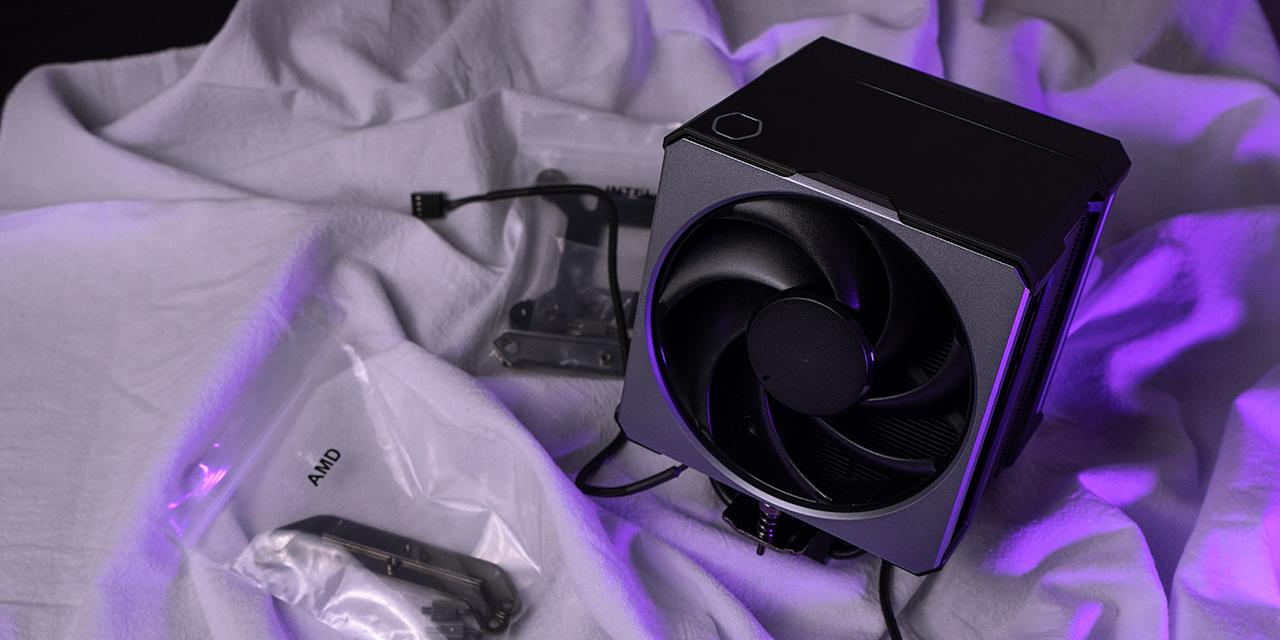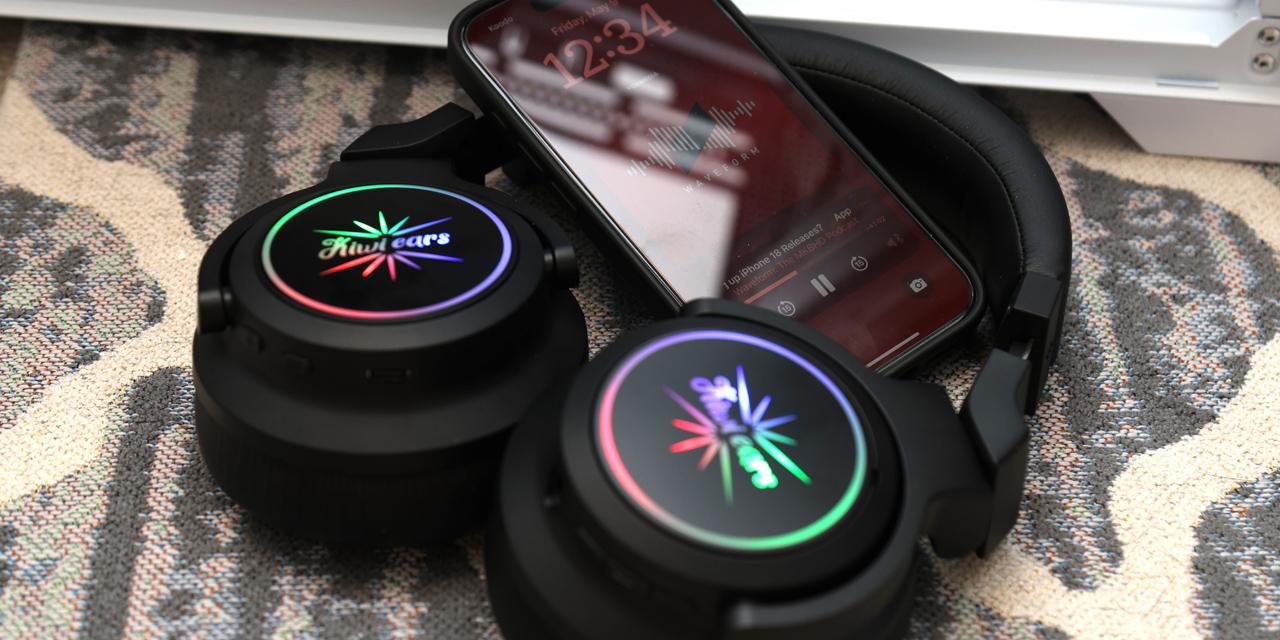Page 2 – Physical Look – Outside

Since the SilverStone Precision PS14 does not have a side window or tempered glass panel, the overall shape features a nice stealth look. Both of the side panels are made out of steel with a matte black finish. It is not likely to show any fingerprints left behind on the side panels, unlike those tempered glass ones. The front panel has two kinds of finishes. On the left side, the panel features a brushed aluminum finish, while on the right side, it has glossy finish. The two finishes are divided by three vertical lines, and the left brushed aluminum finish is slightly wider than the right glossy finish. I would like to say the uneven design is appealing to me, since it looks well-balanced combining the power switch on the right and the front I/O ports on the left. Surprisingly, there is one opening on the front panel for an internal 5.25" drive, which means internal CD/DVD drives can be installed. I am not sure if it is a good idea, since nowadays almost nobody uses these things on a computer. The dimensions of the PS14 are 210 mm in width, 465 mm in height, and 458.6 mm in depth, which is interesting in a way that the depth is less than the height. This configuration reminds me some of the old 486 full towers, haha.

A power switch, restart switch, two USB 3.0 ports, and the audio/microphone jacks are located on the edges of the front panel. I personally really like this particular layout, since I prefer to put my computer on the table by my right hand side. The front I/O ports are just conveniently located to the left edge of the front panel, such that I can reach to those ports easily. It would have been nice to see the newer USB Type-C port, but at this price point, the omission is forgivable. In the above picture, you can clearly see the asymmetrical finishes on the front panel. In fact, the whole front panel features an asymmetrical design. The 5.25" drive opening, for example, has slots on the right side of it, while there is nothing on the left. There are also some ventilation holes near the front I/O ports section. I am not sure how much cool air can go into the case through those small ventilation holes, but there is no need to worry about it, since there is a big ventilation hole at the bottom of the front panel. Another thing worth mentioning is the connection between the side panel and the front panel. As you can see from the photo above, the connection is pretty smooth. First, the gap is really small, and second, there are no sharp edges between the two panels.

The back of the SilverStone Precision PS14, like the rest of the case, is simple and clean. There are four major sections at the back; namely, the power supply mounting place, motherboard I/O backplate, rear exhaust, and expansion card slots. According to the shape of the power supply mounting hole, the power supply is horizontally mounted at the bottom section of the chassis. Since the power supply has already taken this bottom position, the motherboard can only be located above it, meaning the I/O backplate opening is at the top. There are seven expansion slots available on the SilverStone Precision PS14, which is standard for an ATX mid-tower. As for the rear exhaust, as you can see from the photo above, there is a 120 mm fan included from the manufacturer.

There are four plastic stands on the bottom of the case to support the SilverStone Precision PS14, rising the case up about 1 cm on top of the resting surface for better ventilation. These stands are extremely strong. However, there are no rubber bottom provided to further enhance the grip of the stands. I would prefer to have some rubber bricks that can offer some kind of protection to your floor or table surface. You can also see from the above photo a washable filter is attached to the bottom grille of the chassis. The filter is not reinforced by any hard plastic structure, but they are removable for easy cleaning. Note the power supply of this case is bottom mounted, therefore the ventilation area behind the filter is actually designed for the power supply.
Overall speaking, the SilverStone Precision PS14 is a good looking computer case that is made out of sheet metal and plastic. The gaps between panels are small and even, which shows a high level of assembly quality. The asymmetrical design of the front panel is really cool. There is only one suggestion I can make to improve the exterior of the PS14, which is to have some of the rubber bottom to the stands so the computer will not scratch the surface of table or floor.
Page Index
1. Introduction, Packaging, Specifications
2. Physical Look - Outside
3. Physical Look - Inside
4. Installation and Conclusion





